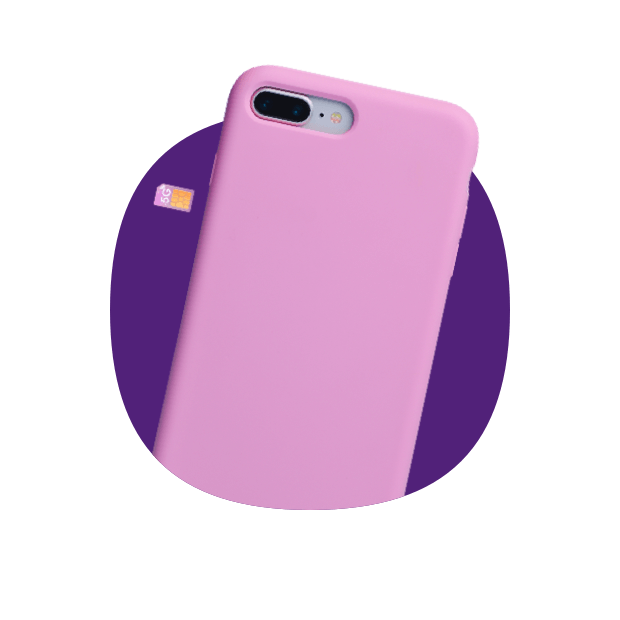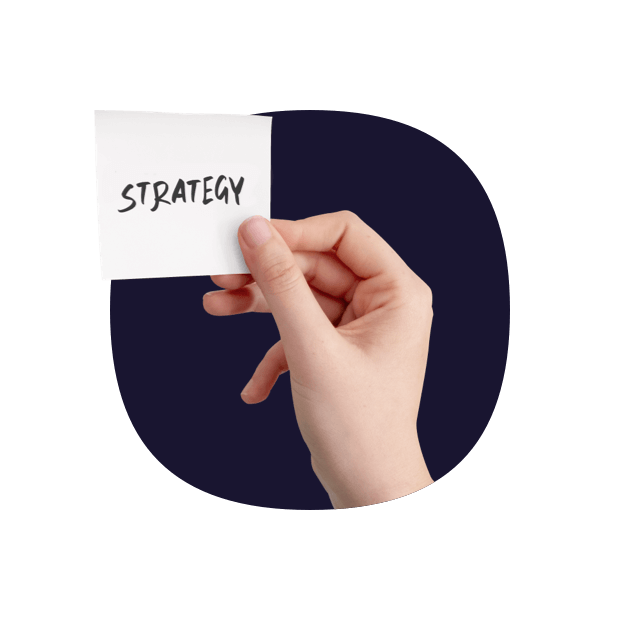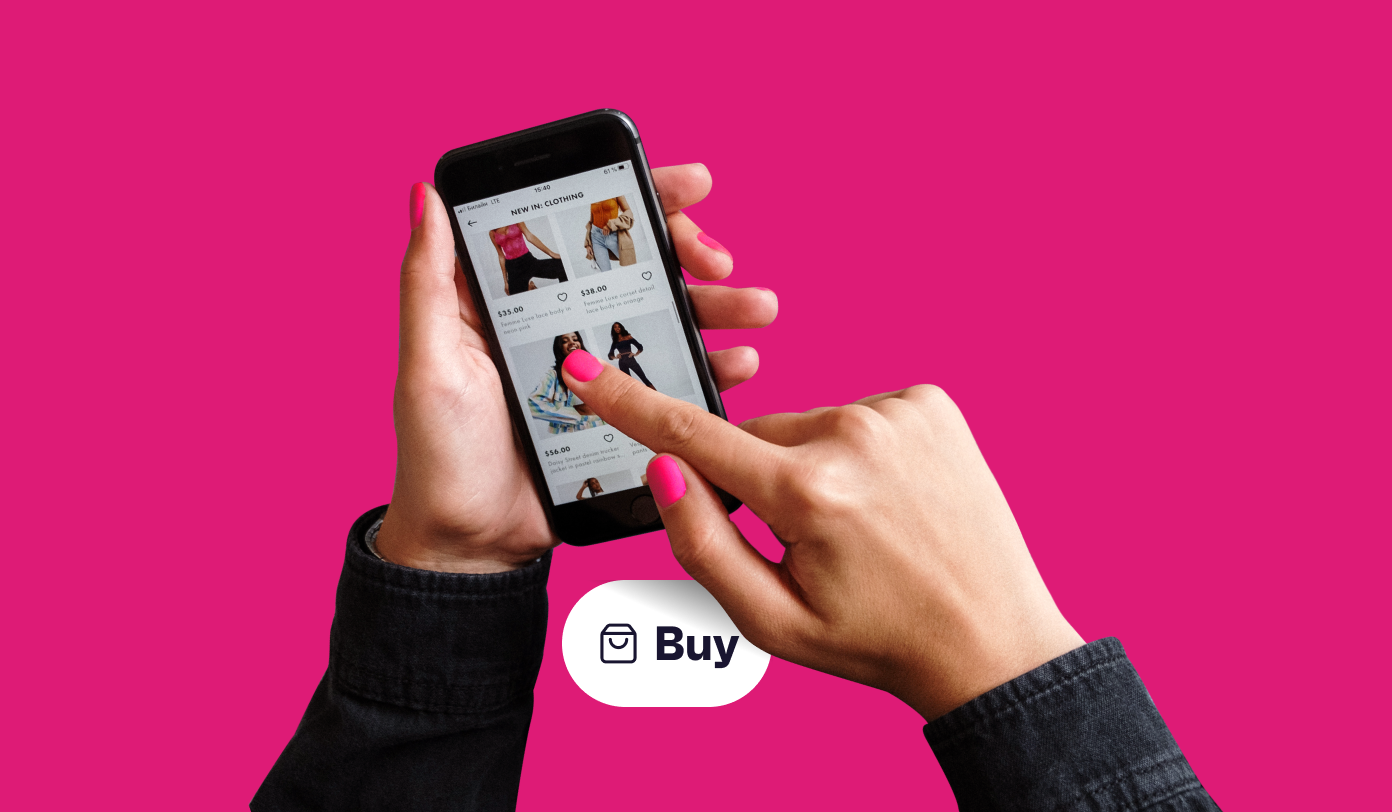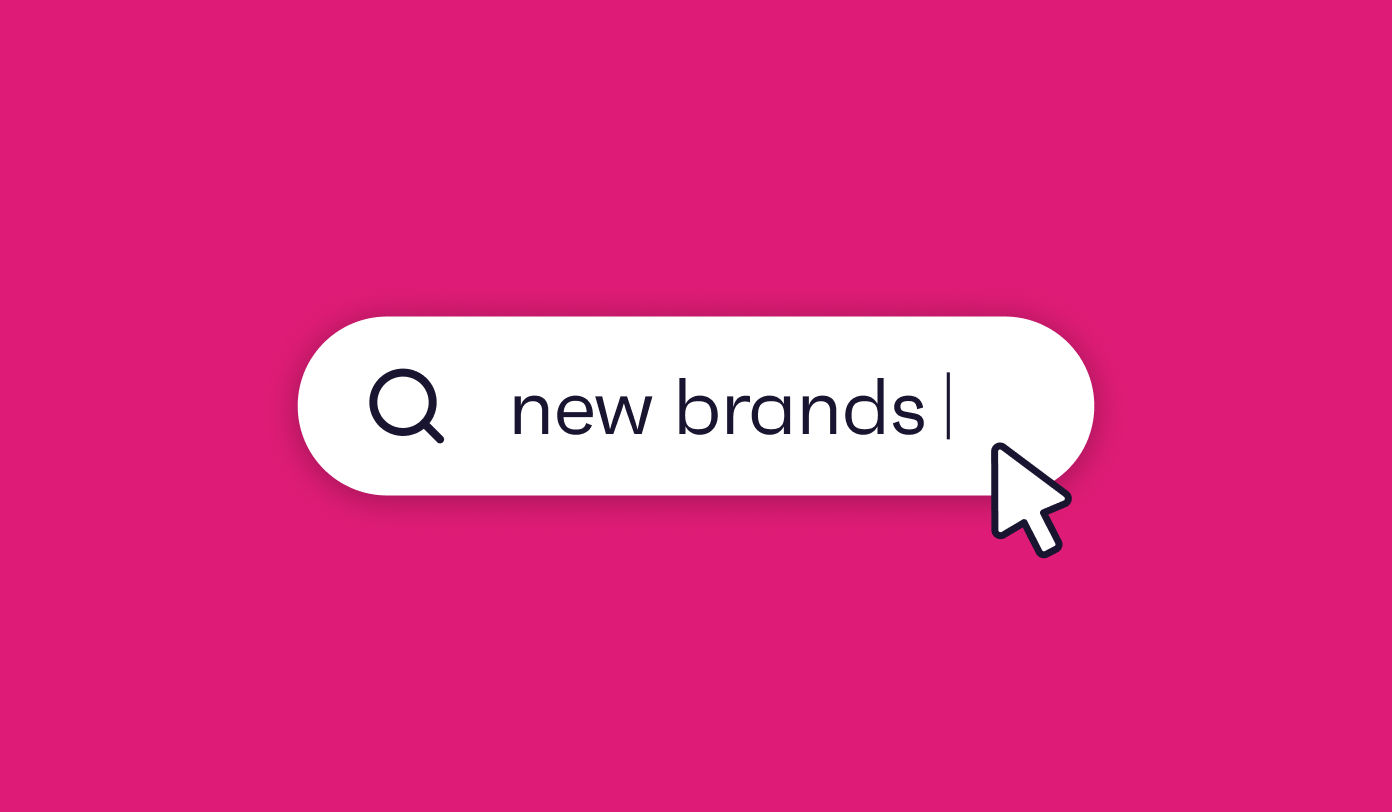Let’s talk about our little friend, content marketing. We’re sure you’ll agree that a content marketing strategy is something every brand needs, but getting it right is easier said than done. Not every marketing team will take the same approach, but we’ll let you in on a secret – all the best content marketing strategies are informed by consumer research.
Knowing exactly what your audience is thinking, feeling, and doing is key to a successful content marketing strategy.
Now we’ve spilled the beans, let’s dig a little deeper into why that is. In this blog, we’ll answer:
- What is a content marketing strategy?
- Why is nailing your content marketing strategy important for driving growth?
- What types of content marketing are there and how do they impact your overall strategy?
- What makes great content marketing?
- How can you create content for the different funnel stages?
- What are some good examples of content marketing?
- How can you create a content marketing strategy with GWI?
Before we dive feet first into the good stuff, let’s start with a quick definition to keep us on the right path.
What is a content marketing strategy?
A content marketing strategy is a plan designed to attract, engage, and nurture audiences through the creation and strategic distribution of content like articles, videos, social media posts, and more. Basically, stuff that keeps customers hooked.
Why is nailing your content marketing strategy important for driving growth?
Two words: marketing funnel. Effective content marketing involves consistently producing articles, videos, social media posts, and other types of content that engage your audience at every stage of the customer journey. That might be a viral video that puts your brand on someone’s radar for the first time, a tutorial or template that provides tangible value, or a newsletter they look forward to receiving every week (much like On the dot *ahem*). But that’s just the tip of the iceberg. A content marketing strategy is important if you want to:
1. Increase page views
Increased website traffic not only enhances your online visibility but also fosters greater engagement with your target audience. Simply, the more visitors your site attracts, the better your chances of connecting with and captivating your audience.
Not to mention, focusing on long-tail keywords is a great SEO strategy for addressing consumers’ questions and building trust with your audience. This approach can help you secure top positions in search results and get your content in front of potential customers actively seeking answers. Mastering this tactic can become your superpower, unlocking a stream of new customers from the search engine results page.
2. Build brand awareness
Delivering the right content on the right channels will get your brand in front of more consumers at the very beginning of their buying journey. Repeat after us: awareness is everything. Focusing on shareable content like PR stories, short-form video, and data visualizations will help to generate buzz around your brand. You just need to know where brand discovery happens for your audience and what kind of content they want to see most. So how do you find that out?
Easy – use a consumer research platform like GWI to get the answers. You’ll uncover key audience insights that might make you rethink your strategy, or validate your ideas. For instance, a quick dip into our platform reveals 18.3% of Gen Z discover new brands and products through pre-roll ads (the ones shown before online videos or TV shows), and 25.3% of this group say they want brands to be funny. That gives you a pretty obvious place to start building your content marketing strategy to reach Gen Z, no? Consumer research is awesome.
3. Generate leads and conversions
Creating content that converts is all about understanding the purchase drivers and pain points of your audience. It might be in the form of a helpful web page providing a handy comparison on how your brand stacks up against competitors, customer reviews that give them the confidence to convert, or promotional emails that drop in their inbox just at the right time and incentivize them to take the plunge.
If we look at Gen Z again, 13% of this audience say exclusive content or services would increase their likelihood of buying a product. Big food for thought if this is a key audience for your brand.
4. Boost customer loyalty
As we’ve just seen, a great content marketing strategy uses data to inform content that reflects what consumers want. And consumer research can also tell you exactly what they expect from brands.
49% of Gen Z say they want brands to be reliable, and 45% want brands to be innovative.
Giving your customers more of what they love is a great way to boost engagement, encourage repeat purchases, and increase referrals. Track what your target audience say they want to see from brands and tap into the perks that make them most likely to buy, like putting loyalty schemes or free delivery center stage in your bottom-of-the-funnel (BOFU) content.
5. Build consumer trust
Consistently sharing valuable content helps build long-term trust with your audience and makes your brand a go-to source of information. What better way to boost your reputation and make customers more likely to share your content or leave positive reviews? This increased trust leads to stronger customer relationships, more word-of-mouth referrals, and ultimately, more sales and growth for your business. Happy days.
What types of content marketing are there and how do they impact your overall strategy?
There’s no shortage of tactics and formats you can use to connect with consumers, but wasting time and resource on the wrong types can be frustrating.
Take the guesswork out of your content planning using our data as your superpower to understand exactly what types of content your audience wants to see. Here are some popular formats to get you started:
1. Online content marketing: Web pages and blogs
Web pages and blogs play different but complementary roles in online marketing. You can use them separately or together to boost impact at different stages of the marketing funnel. Generally speaking, blogs can be particularly useful at the awareness and consideration stages of the purchase journey, where users are searching for answers, while targeted web pages can help to drive conversions at the other end of the funnel.
Arguably, the most important page on your website is your homepage. It’s your shop window, where you showcase your credentials and guide users to your key conversion pages. Use consumer research to craft the perfect message and address your audience’s pain points, and use first-party data to optimize your home page for maximum return.
Featured resource: GWI blog
2. Reports
If you’re a B2B business, you’re probably used to playing the long game with long-form content. Research reports can be a powerful format for attracting new prospects and nurturing existing leads in your pipeline.
If your goal is to generate new leads, offer gated reports on topics with broad appeal to attract your target audience. As you move towards middle-of-the-funnel content, zero in on the specific challenges or pain points your audience faces and demonstrate how your brand can help.
Stuck for topic ideas? Lean into consumer research to understand what’s hot (or not) right now, and get close to your sales teams who’ll give you insight into what’s happening in your customers’ worlds.
Featured resource: GWI digital reports
3. Podcasts
Podcasts are another way you can connect with the 22% of consumers who say they’ve listened to one in the last week. This type of content marketing is easily accessible, widely available, and perfect for repurposing content in other formats – like turning a social media post into a full-blown conversation.
You can use podcasts to cross-promote other content formats like reports and case studies and break into new markets by leveraging strategic partnerships that help you tap into unexpected audiences. Sounds pretty good to us.
4. Ebooks/white papers
These comprehensive guides are usually targeted at B2B businesses, so they’re a good choice if you want to generate leads and position your brand as a reliable industry authority.
Ebooks are typically digital books that cover a topic in depth, while white papers are reports that address specific issues or problems and provide a detailed solution. They’re much more formal and data-driven, so use these content formats to build up trust and brand awareness on the topics you know best.
5. Webinars
Webinars are online seminars designed to educate and engage consumers. They’re a good way to generate leads you can nurture by giving you an opportunity to interact with your audience in real-time, or connect with them later through on-demand content.
This is the perfect content to showcase your expertise, position your brand as a thought leader, and prove your value to consumers. You can also repurpose recordings and transform them into different formats like short-form videos or social media posts.
Featured resource: GWI webinars
6. Email newsletters
Regular newsletters are an easy way to stay on consumers’ radars and boost long-term engagement by providing ongoing value. This type of content gets delivered straight to their inboxes and usually includes articles, product updates, incentives, and industry news. You can use email newsletters to encourage customer reviews and cross-promote cool content people should know about. Think beyond copy –. you can include videos, images, infographics, and other visual delights to keep readers engaged.
Make sure you track important metrics like open rates, click-through rates, and conversions to see where you can optimize your content and adjust your email content marketing strategy.
Featured resource: On the dot newsletter
7. Video content
Videos help your brand tell a visual story that can create an emotional connection with your audience. The type of video content you choose will depend on your content marketing goals, and who you want to target. You can build trust with customer testimonials, educate with tutorials or how-to guides, and showcase your product with visual demos.
It’s important to have a strong, snappy script, quality production, and a clear idea of which channels to distribute your video on – whether that’s posting on social media, embedding it on your website, or including it in your next email newsletter.
The length of your videos is also important. Short-form videos may be all the rage, but long-form is still popular. It all depends on your audience (another great reason to inform your content marketing strategy with consumer research).
42% of Gen Z prefer long-form videos, despite many assuming they only watch short clips.
And don’t make assumptions about older groups either. You can easily reach out to the 55% of Gen X and 43% of boomers who watch short-form videos.
8. Social media content
Social media content plays an important role in increasing brand awareness, boosting engagement, and generating sign ups or downloads. It helps keep you connected to consumers, whether you want to go viral or target your audience where they hang out online.
Facebook is still the global leader for monthly engagement among millennials, Gen X, and baby boomers, while Instagram is Gen Z’s most-used app. Want more details? We talked to nearly 1 million consumers to gather 2024’s biggest social media trends in our latest report full of insights and tips on how to connect with your audience – from which platforms they’re on to what type of content they want to see.
There are lots of different formats you can use to post on social media including visuals like videos, memes, and photos, or text updates like announcements, news, and product updates. You can also use social platforms to cross-promote other content your audience may have missed on other channels.
Featured resource: Social media trends report
Social media trends: The highlight reel
Check it out
9. Infographics
When you want to share complex details with your audience without overwhelming them, infographics are the way to go. They usually have very minimal text with charts, graphs, and other images to translate information into visuals that are much easier to understand.
Opt for this format when you want to simplify data from reports, case studies, or white papers to draw in new audiences, showcase your expertise, and position yourself as a thought leader.
10. Case studies
Case studies use real-life stories to highlight notable accomplishments and show consumers what winning looks like with your brand. They usually include customer testimonials and client interviews that help you prove your credibility, validate the benefits of your product, and show value to your audience.
This works best as middle of funnel (MOFU) content when consumers are in the consideration stage. The idea is to help them move towards conversion by providing evidence and solutions that give them no other option but to choose your brand. What problem did you help them solve? And how do you stand out from competitors?
Featured resource: GWI case studies
What makes great content marketing?
Exceptional content is what makes you stand out from the crowd. Some may call it je ne sais quoi, but there’s a clear strategy to creating content that generates leads, boosts engagement, and drives growth. Let’s look at some of the key elements:
1. It’s audience-centric
First things first: your audience should always be center stage. Our consumer research helps you understand their wants, needs, and preferences so you can create content that resonates with them. When you make sure they’re in the spotlight, your brand will shine too.
2. It’s original
If you want to keep consumers’ attention, you need to make content that’s fresh, creative, and one-of-a-kind. Getting inspired by other brands’ content marketing is natural, but resist imitating others – especially if it doesn’t match your brand’s usual content.
3. It’s valuable
Great content marketing doesn’t just grab consumers’ attention, it also provides real value by offering solutions, advice, or tips that speak to a need. You can still have fun and entertain your audience, but don’t forget to show them you’re there to solve a problem.
4. It tells a story
Compelling stories can have a major impact on how your audience engages with your brand – especially if they’re relatable and unforgettable. It’s another way your content can tap into their emotional side and create a deeper connection.
5. It’s high quality
Well-researched, well-written content is the key to establishing credibility with your audience. When it’s done consistently, it proves that you’re a reliable source of information that prioritizes accuracy and professionalism at all times.
6. It’s action-driven
Content marketing that inspires your audience to take action is essential if you want to move them through the funnel. Make sure you give them clear directions – whether that’s signing up for a service, buying a product, or sharing your content with their followers.
7. It’s activated on the right channels
If you want to maximize your reach and connect with the right people, you need to know your audience. Consumer research tells you where they spend their time and how they consume content, and can supercharge your strategy by helping you understand the global media landscape.
With deep data on your audience, you can find the perfect channel to reach the 1 in 4 people of color who say influencer ads are most relevant to them on social media, or connect with survival and horror gamers who are twice as likely to want a luxury and gaming collab. You just might uncover something new, like a lucrative cross-market opportunity or brand collaboration worth exploring.
Ready to level up your content strategy?
Book a demo
How can you create content for the different funnel stages?
Content marketing is all about moving your audience through the customer journey with content that attracts, engages, and converts. Your goal is to connect with consumers using different types of content that speak to them at every stage of their journey, from the top to the bottom of the funnel. Here’s how to nail it:
Top of funnel (TOFU) content
TOFU content is all about stoking curiosity, raising brand awareness, and attracting consumers. This is the beginning of the customer journey where consumers are becoming aware of a problem, so content that offers solutions makes the most sense here – especially if you want to nurture leads and drive conversions later on. Think about your own recent brand or product discoveries, and the questions you wanted answers to upfront.
Some of the challenges you might face at this stage include attracting attention, establishing trust, and generating interest. It may also be hard to stand out from competitors, track ROI, and find the right balance of content to keep consumers interested.
Set the foundation with content marketing like SEO-optimized blog posts that address queries or pain points, social media posts that expand your reach, and shareable infographics that get the word out about your brand to show your audience you have the answers they’re looking for.
Middle of funnel (MOFU) content
MOFU content is for consumers in the consideration stage – they’re now evaluating the solutions you’ve offered, but still need a little more information before making any decisions. This type of content marketing nurtures leads and provides deeper insights that inspire them to take the next step towards conversion.
Some of the challenges you might face at this stage include keeping consumers engaged, establishing an authentic relationship, and convincing your audience you’re the right choice to solve their problem.
You can address these issues with content like webinars that encourage real-time interaction, reports that position you as an expert, and email newsletters that spark regular engagement.
Bottom of funnel (BOFU) content
BOFU content is designed to drive action among consumers who are ready to make a decision. This is the last step of the customer journey, so your content should focus on demonstrating value, addressing any lingering concerns, and converting leads.
Content marketing at this stage can be challenging if you can’t effectively communicate the benefits of your product, soothe consumer concerns, and convince prospects to make a purchase.
To help your audience make a decision, try using case studies or testimonials that offer social proof, product demos that highlight key benefits, and comparison guides that help consumers evaluate their options.
What are some good examples of content marketing?
Check out these four content marketing examples to see the different formats you can incorporate into your strategy.
Infographics
Got a lot to say? Make it easy to understand with an infographic like this one that lets consumers see the big picture at a glance.

Short-form video
Stop consumers in their tracks with a high-energy video that jumps right into the action.
Influencer marketing
As our Senior Trends Analyst, Steph Harlow, points out: “Influencers have taken on more diverse roles and are attracting new audiences.”
Proof? Check out this video from Gym Tan, an older influencer who’s keeping boomers scrolling and shopping.
Paid ads
Paid ads show up on digital channels like search engines, social media, and websites to help you zero in on your target audience, drive traffic, and generate leads.
Standout ads have compelling visuals, strong copy with a persuasive message that clearly communicates your offer, and often include a call to action. They can be funny, serious, playful, or educational – just make sure they grab your audience’s attention.
Here’s one of our fave ad creatives:

How to create a content marketing strategy with GWI
Creating the perfect content marketing strategy can feel daunting without the right consumer data to guide you. Let’s break down the steps using GWI insights to show how it’s done.
Step 1. Determine your overall goal
The first step to determining your goal is figuring out what you want to achieve with your content marketing. Are you trying to build brand awareness or drive conversions?
Your goal will guide how you use the platform as well as which questions and profiling points you hone in on. Once you figure out the kind of insights you need and have a crystal clear idea of what you want to accomplish, you can start digging into the data.
Step 2. Understand what will resonate with your audience
Next, you’ll dive into the platform and use our audience builder.
Let’s say you’re a tech brand looking to promote a brand new line of smart TVs. How do you go about deciding who to target, what content to create, and which channels to focus your ad spend on?
Start by opening our Core data set, then the folder for “purchase behavior”, and select “electronic purchases”. This allows you to see what consumers have recently purchased, and what’s on their to-buy list in the next 3-6 months.
The data shows that globally, smart TVs are the electronic product category consumers are most likely to buy in the next six months – and 16% say they plan to – but now you want to see if there are indicators for higher purchase intent.
After clicking on the folder for “lifestyle” and selecting “lifestyle indicators”, you learn that consumers approaching significant life events are much more likely to be planning to buy than average, including those having a child (54% more likely) and getting married (53% more likely).
These aren’t the largest buying groups though, each representing just 6% of smart TV intenders. You decide to focus on a different consumer group those planning to get a new pet in the next 6 months, who are 45% more likely than average to have a new smart TV on their to-buy list, representing 22% of smart TV intenders.
They’re different to those who already have pets, although pet owners are 17% more likely than average to be planning to buy a smart TV.
Ready to get even more granular?. Here are some other areas we have the latest audience data on:
a. Brand qualities
Understanding what draws consumers to your brand is essential to tailoring your content marketing strategy. Want to make sure you’re connecting with your target audience? Show them you have the qualities they’re looking for.
Consumers in Europe who plan to buy smart TVs want brands to be reliable, authentic, and innovative, while future pet owners who plan to buy a TV want them to be reliable, innovative, and smart. They’re also more likely to want brands that are young, trendy, and exclusive. With this information, you can create ads that showcase your innovation, blogs that prove your product’s reliability and other content with messaging that directly speaks to the insights you’ve discovered.
b. Brand discovery
To ensure your content reaches the right audience, you need to understand where and how consumers discover new brands. Whether it’s through social media, search engines, or even group chats, knowing these touchpoints can improve your content strategy.
For instance, when it comes to smart TVs, 40% of potential buyers learn about new brands through search engines. This is closely followed by TV ads, which capture 37% of the audience, and word-of-mouth recommendations, which influence 31%.
On the other hand, future pet owners have different discovery preferences. They are 37% more likely to find brands through podcast ads, with 29% influenced by celebrity or influencer endorsements, and 26% swayed by reviews from expert bloggers.
With this knowledge, you can tailor your content, allocate your budget wisely, and place your content where your audience is most likely to see it. By doing so, you ensure your brand is present in the right places, reaching the right people, and maximizing your marketing efforts.
c. Internet and social media usage
For digital campaigns, you need data on where and why your audience spends time online. That way you can put the content they want to see right in front of them.
Smart TV buyers and those also planning to get a pet say they’re mainly on social media to keep in touch with friends/family, read news stories, and fill their spare time.
By unpacking specific behaviors and preferences of smart TV buyers and future pet owners, you can create user-generated content, PR stories, and entertaining content that aligns with their habits and interests.
d. Self-perception
Creating personalized content that speaks to your audience starts with knowing the way they see themselves. If they think they’re fun, exciting, and interesting, you can create that “omg, that’s me!” moment with content that not only engages them, but also makes them want to share with others. If you can ace this, they’ll identify with your brand beyond what you can offer.
If we apply this to our smart TV example, future pet owners planning to buy a smart TV describe themselves as open-minded (65%), creative (56%), and confident (55%), and they stand out most compared to smart TV buyers for being career-focused (+32%).
That would be your sign to start making content like ads that feature people they connect with, blogs taps into their creative side, or podcasts that cover topics that make them feel seen.
e. What’s trending with your audience
Staying on top of consumer trends can help you understand what’s hot with your audience and what type of content will hit the mark with them. Are they into sustainability, trying to be more cost-conscious, or turned off by certain retail experiences?
Future pet owners planning to buy a smart TV say they’d rather pay more for an eco-friendly version of a product, 62% would rather wait for a product to go on sale than buy at full price, and 63% prefer a big retailer over a smaller retail store.
You can use these insights to shape your strategy by sharing content that highlights product details, promotes sales or discounts, and lets your customers know which big name retail stores they can visit to buy your brand.
Step 3. Connect with your sales teams and account managers
Once you’ve gathered the details you need on your audience, reach out to account managers and members of the sales team to understand key pain points and purchase blockers. You can use them as your go-to resource for information, insights, and deep data that you can plug into your content strategy at every stage of the funnel.
Get the scoop on hot topics to leverage trends for TOFU content, request reports full of MOFU-worthy stats that help move your customers through the consideration stage, and seal the deal with detailed data you can use for BOFU content.
Most importantly, don’t be afraid to ask questions that confirm your intuition or blow your hunches out of the water.
Step 4. Review your best-performing content
Dig into important metrics that give you a clear picture of what’s worked well in the past and what you want to avoid in the future. Analyze your top-performing content, pick out the elements that made it a success, and use them to create more campaigns that wow your audience.
But remember, you don’t always have to start from scratch. You can use these metrics to repurpose content, improve content that used to perform well but has dropped off, and cross-promote content on different channels to squeeze all the value you can out of what you’ve got.
Step 5. Develop your content plan
Now’s the time to revisit your original goals, gather your favorite insights, and create a detailed plan. Don’t forget to:
a. Identify which channels your audience is on
This can’t be said enough: if you don’t know where your audience is, you can’t reach them. Skip this issue by digging into where to find them and where they buy products, so your content is exactly where it should be.
Future pet owners who plan to buy a smart TV regularly engage with WhatsApp (64%), Instagram (57%), and Facebook (53%). Plus, 52% say they use Instagram to follow/find information about products and brands, followed by Facebook (36%), TikTok (32%), and Pinterest (15%).
Once you have this information, you can move on to the next step.
b. Map content across the funnel
This is where TOFU, MOFU, and BOFU content comes into play. Plan out what type of content you want to include at each stage and develop strong messaging at every level to help seamlessly move your audience from awareness to conversion.
c. Tap into GWI Zeitgeist
Zeitgeist is our up-to-the-moment data set released every month that gives you a detailed picture of what’s going on right now. Zero in on timely insights around topical events and tentpole moments to plan your content strategically, for maximum engagement.
6. Create your content
Dive in and start making the content your audience is craving. With on-demand insights at your fingertips, you’ll be able to integrate all your findings into a strategy that hits the mark every time.
7. Develop your bulletproof promotion plan
Before you take action, use our insights to help with media planning to determine the best way to promote your content across different channels. Look for the platforms that will increase your visibility, boost engagement, and drive conversions.
8. Measure success
Track key metrics like website traffic, engagement, and conversion rates to see what works and what doesn’t. Get as granular as you can. This is the information you’ll use for the next step.
9. Optimize and iterate
Use GWI as your compass to keep checking in on your performance data and your audience, so you can stay on top of consumer trends and create more reactive content.
Want to nail content marketing?
Our data-driven approach is the key to creating an audience-focused content marketing strategy. Chat with our experts to learn how you can get the insights you need to save time, market across the funnel, and deliver content that wins over consumers.






.webp?width=495&height=317&name=pink_thumb_graphs%20(1).webp)
.webp?width=495&height=317&name=pink_thumb_letter%20(2).webp)
